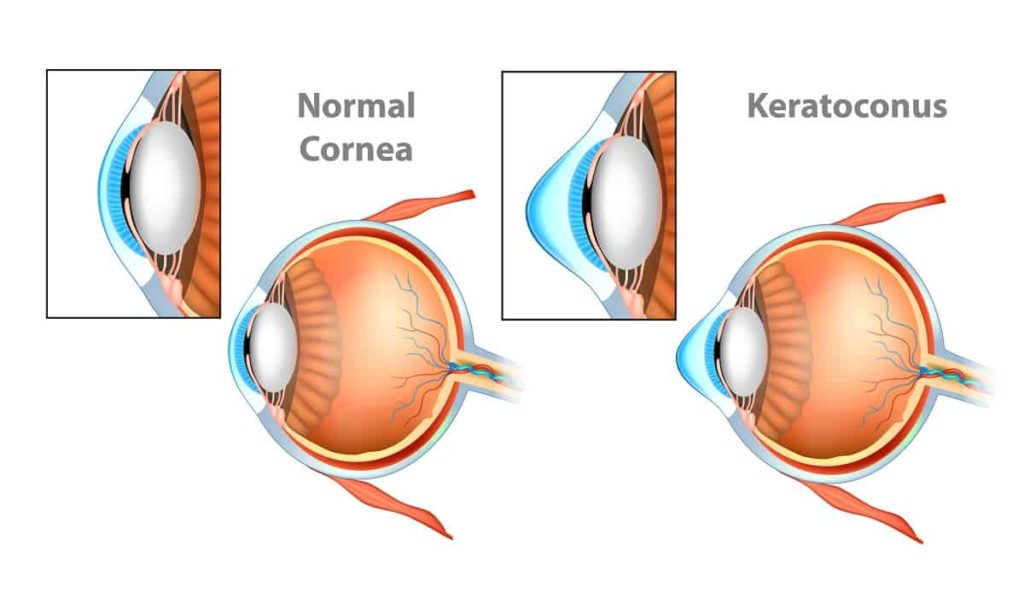
Keratoconus is a degenerative condition affecting the cornea, or the clear covering of the eye. A healthy cornea has a round shape, similar to a basketball. A cornea with keratoconus thins and bulges outward into a cone-like shape, more similar to a football. Since the cornea’s job is to focus incoming light onto the retina, these corneal abnormalities cause significant visual impairment, including blurry, distorted vision.
Keratoconus usually progresses very slowly, but as it becomes more serious, it can make simple everyday tasks like reading or driving difficult. The condition can also make it nearly impossible to comfortably wear contact lenses for vision correction.
The team at Laser Eye Center is highly respected for our experience managing cases of keratoconus. When the disorder is caught early, we strive to intervene quickly so we can slow or stop its progression. At our practice, corneal crosslinking has been instrumental to our team in helping keratoconus patients preserve vision.
WHAT YOU SHOULD KNOW ABOUT KERATOCONUS
For most people with keratoconus, the onset of symptoms starts in their late teenage years and early twenties. Symptoms usually include blurry, distorted vision, increased sensitivity to light, and glare. Some patients experience mild eye redness or swelling.
The most common question we are asked about keratoconus is what causes it. Many doctors believe there is a genetic component to the disorder. Other factors that have been linked to keratoconus include connective tissue diseases, conditions like Down syndrome and Turner’s syndrome, and environmental elements such as overexposure to UV rays. Chronic eye irritation (i.e., from allergies) and excessive eye rubbing may also play a role in the development of keratoconus.
Keratoconus treatment depends on the stage and progression of the disorder. Historically, treatment solutions were focused on managing deteriorating vision with glasses or soft contact lenses instead of altering the course of the disease. But as the cornea becomes more distorted, visual aids may no longer help.
MANAGING KERATOCONUS WITH CORNEAL CROSSLINKING
Corneal crosslinking is the only option currently available to delay or prevent the progression of the disease. The minimally invasive office-based treatment stiffens the collagen strands in the cornea to make it stronger and thicker.
During the treatment, riboflavin drops are applied to the eyes and activated with ultraviolet light. This creates new chemical bonds that reinforce the collagen strands in the cornea to stop it from further protrusion and distortion.
The first and only FDA-approved corneal crosslinking platform is manufactured by Avedro and conveniently offered at Laser Eye Center. For more information about managing keratoconus with corneal crosslinking, please call or email our practice today.
Schedule your free consult today
Click here to learn moreGet started on your journey to clearer, crisper vision with Laser Eye Center™. Our expert team of doctors are trained and skilled in the latest technology and methods for laser vision correction. To learn more about our state-of-the-art All Laser LASIK technology or about All Laser LASIK itself, contact us today. Schedule your FREE All Laser LASIK consultation by calling today.

